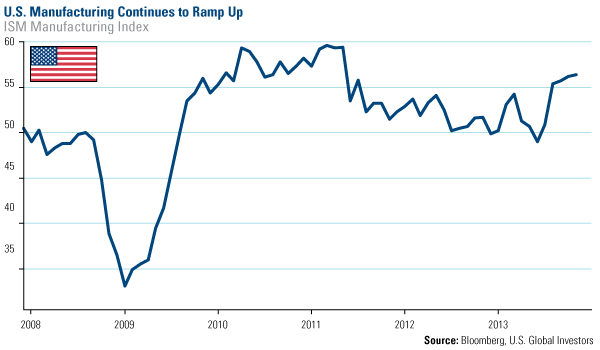The Economy and Bond Market Radar (November 4, 2013)
Treasury bond yields rose this week on better economic data along with a modest shift in expectations on the timing of quantitative easing tapering. Expectations for tapering were centered around March 2014, but with the statement from the Federal Open Markets Committee (FOMC) meeting this week, some believe tapering could occur as soon as December.
Strengths
- The ISM Purchasing Managers Index rose more than expected in October, reaching its highest level since April 2011.
- Industrial production in September was also better than expected, rising 0.6 percent.
- Chinese manufacturing PMI came in ahead of expectations, hitting the highest level since May 2011.
Weaknesses
- September retail sales were modestly weaker than expected and actually declined by 0.1 percent month-over-month.
- Consumer confidence fell sharply in October, with the government shutdown playing a significant role. Consumer confidence hit a six-month low.
- The rollout of Obamacare has produced quite a bit of negative publicity and is yet another factor weighing on investors’ confidence.
Opportunity
- Despite recent conflicting commentary, the Fed continues to remain committed to an overall accommodative policy and is unlikely to raise interest rates in 2013 or early 2014.
- Key global central bankers remain in easing mode such as the European Central Bank (ECB), Bank of England and the Bank of Japan.
- The government shutdown damage is probably done and may push QE tapering into mid-2014.
Threat
- Inflation in some corners of the globe is getting the attention of policy makers and may be an early indicator for the rest of the world.
- Trade and/or currency “wars” cannot be ruled out which may cause unintended consequences and volatility in the financial markets.
- The recent bond market sell off may be a “shot across the bow” as the markets reassess the changing macro dynamics.















